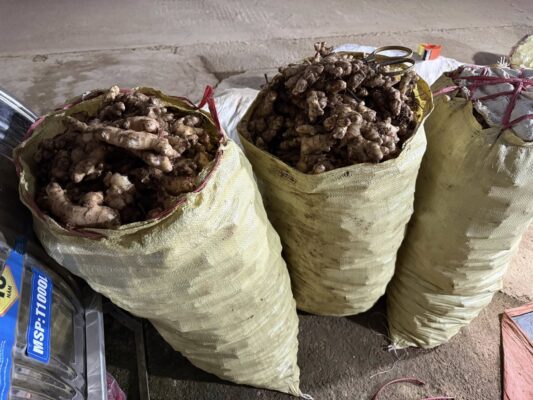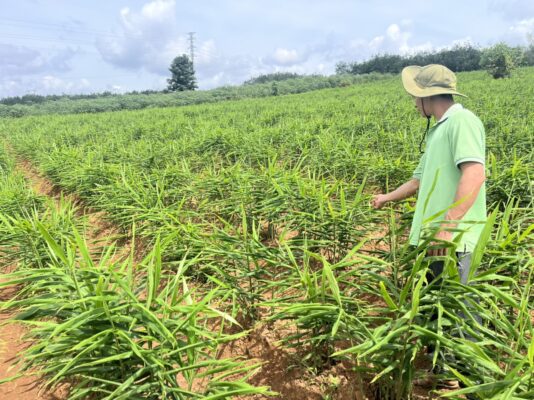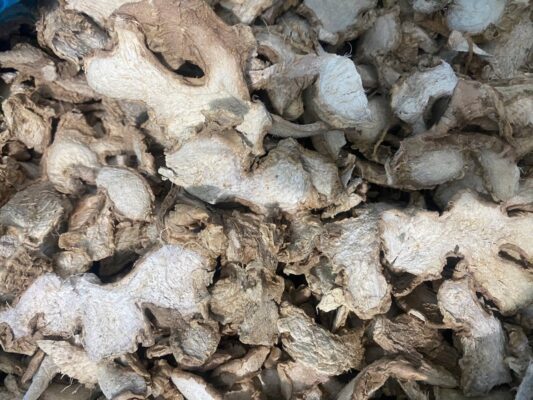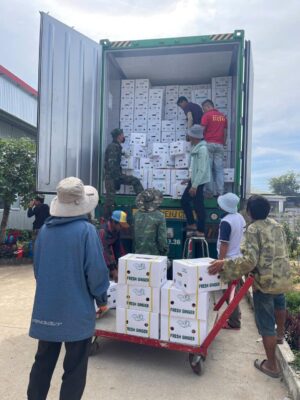Dried Ginger Vietnam – The World’s Favorite Natural Spice
Meta description:
Dried ginger Vietnam is famous for its strong aroma and high essential oil content. Discover the main ginger-growing regions across Vietnam and why the world prefers Vietnamese dried ginger.
1. Dried Ginger Vietnam – A Natural Treasure of Flavor and Aroma
Dried ginger Vietnam has become one of the most sought-after agricultural products worldwide, thanks to its rich aroma, intense spiciness, and high essential oil content.
Made from carefully selected fresh ginger grown across diverse climates, Vietnamese dried ginger is known for its bright golden color, strong fragrance, and versatile uses in food, beverage, and traditional medicine industries.
More than just a spice, Vietnamese dried ginger represents the harmony between nature’s blessings and the dedication of farmers from every region of the country.
2. Major Ginger-Growing Regions in Vietnam
Vietnam has four main ginger-growing regions: the Northwest, the Central Highlands, Ky Son, and the Mekong Delta (especially Kien Giang province). Each region offers distinct soil, climate, and cultivation methods, resulting in different ginger varieties and qualities.
2.1. Northwest Vietnam – Mountainous Aroma and Strong Flavor
In the mountainous Northwest, farmers mostly grow local yellow-flesh ginger varieties. The gingers here are cultivated by ethnic minority communities on upland fields.
Due to the rough terrain, ginger roots are usually smaller and less uniform, packed in 40–50 kg bags. While not always suitable for high-end export markets, they are widely used for drying and processing or exported to Indonesia and Bangladesh.

Because the harvest season coincides with the cool months (autumn and winter), most ginger is dried using heat or sunlight, resulting in bright yellow dried ginger slices with a strong and spicy aroma.
2.2. Ky Son Ginger – High Essential Oil and Bold Taste
Ky Son district, located in the northern mountains, is also known for its yellow-flesh ginger.
Similar to the Northwest, the ginger here is grown mainly by ethnic minority farmers on high hills with limited mechanization.
Although the yield is lower, Ky Son dried ginger is prized for its intense aroma and rich essential oil, making it an excellent choice for ginger powder, herbal teas, and spice blends.
2.3. Central Highlands – Vietnam’s Leading Ginger Export Region
The Central Highlands (including Dak Lak, Gia Lai, Lam Dong, Dak Nong, and Kon Tum) is the largest and highest-quality ginger-growing area in Vietnam.
With fertile red basalt soil, favorable weather, and advanced cultivation techniques, yields can reach up to 120 tons per hectare.
Central Highlands ginger is known for its large size, bright color, and high oil content, making it ideal for export to demanding markets such as Japan, the United States, the Middle East, and Europe.

During the dry season (January–May), gingers are naturally sun-dried, which helps retain their aroma and essential oils. For this reason, dried ginger from Vietnam’s Central Highlands is regarded as one of the finest in Asia and a symbol of premium quality Vietnamese dried ginger.
2.4. Mekong Delta (Kien Giang) – Mild Fragrance and Golden Color
The Mekong Delta, particularly Kien Giang and U Minh, also plays a key role in Vietnam’s ginger supply.
Here, the ginger has a mild aroma, smaller size, and attractive yellow color, suitable for local consumption and export to Cambodia.
Average yields range from 60 to 70 tons per hectare, ensuring stable output throughout the year.
Thanks to the region’s warm climate, farmers can produce fresh and dried ginger continuously, supporting Vietnam’s year-round export capacity.
3. Why the World Prefers Dried Ginger Vietnam
Dried ginger Vietnam stands out globally for its natural advantages and superior flavor profile.
Several factors contribute to its international popularity:
-
High essential oil content and strong spicy flavor, perfect for food, beverage, and pharmaceutical uses.
-
Sun-drying methods preserve the original aroma, golden color, and natural nutrients.
-
Consistent year-round supply from multiple growing regions.
-
Competitive export advantages, as Vietnam benefits from numerous free trade agreements (FTAs) that reduce import tariffs in major markets.
As a result, Vietnamese dried ginger is widely present in the United States, Australia, Japan, South Korea, the Middle East, and Europe, gaining recognition as a high-quality, naturally processed spice.
4. DATO – Trusted Exporter of Dried Ginger Vietnam
Among leading exporters, DATO is a pioneer in producing, processing, and exporting dried ginger from Vietnam.
The company’s product range includes:
-
Fresh ginger, frozen ginger, dried ginger, and ginger powder,
-
Along with value-added products such as instant ginger tea and honey ginger syrup DATO.

A shipment of 48 tons of Vietnamese ginger exported to the US – a testament to DATO’s international capacity and reputation.
DATO’s dried ginger is naturally sun-dried during the dry season (January–May) to ensure that the essential oils and flavor are fully preserved.
With strict quality control and sustainable sourcing from Central Highlands farms, DATO has successfully exported its products to the U.S., Australia, Korea, and the Middle East, enhancing the global reputation of dried ginger Vietnam.
5. Conclusion
Dried ginger Vietnam is not only a traditional spice but also a symbol of Vietnam’s agricultural excellence.
From the fertile red soils of the Central Highlands to the lush fields of the Mekong Delta, each slice of dried ginger carries the rich aroma of the land and the hard work of Vietnamese farmers.

As demand for natural and sustainable ingredients grows worldwide, Vietnamese dried ginger continues to strengthen its position in the global spice market — representing quality, purity, and authenticity from the heart of Vietnam




